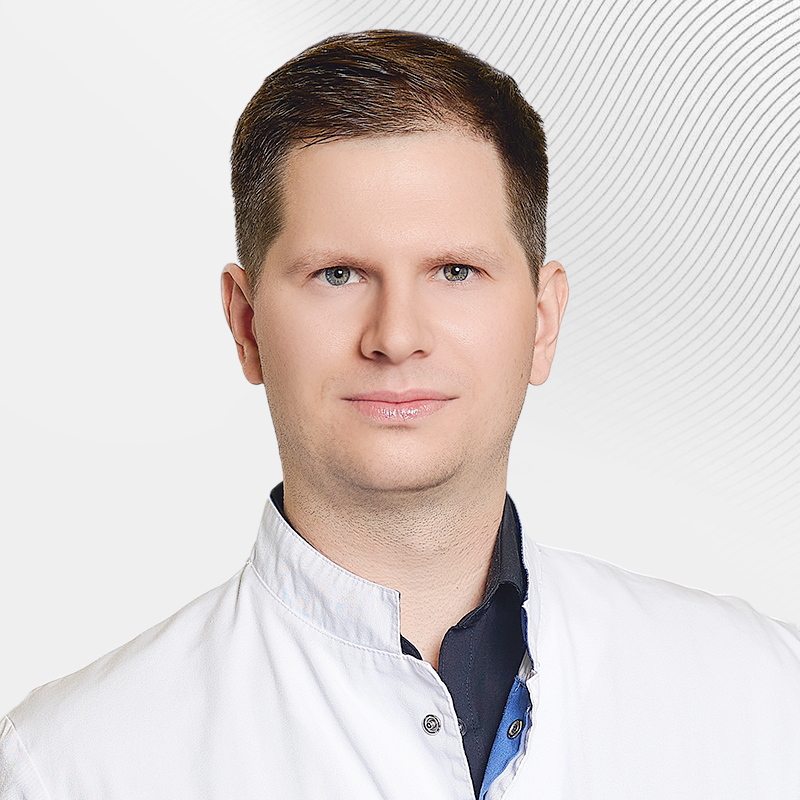Postoperative hernia repair
An abdominal hernia is a cosmetic defect that significantly reduces the quality of life, causes discomfort, prevents habitual physical activity and can cause life-threatening complications. Modern medicine assumes the only effective solution – hernia repair/ hernioplasty. Conservative treatment, physical exercises, and any physiotherapy techniques are ineffective and not used for this disease. In the EMC clinic, hernia surgery is performed with the installation of mesh endoprostheses, which provide reliable strengthening of the abdominal wall, which prevents the development of relapses of the disease and helps restore the normal mechanics of the abdominal muscles.
Correction of an abdominal hernia
An abdominal hernia is a condition in which the organs of the abdominal cavity extend beyond its limits through a defect in the dense layers of the abdominal wall. In this case, the only treatment option is hernioplasty, a surgical operation to remove the defect and prevent its occurrence.
Postoperative hernias occur as a complication after surgery. The reasons may be different – suppuration of the wound, incorrect choice of suture material, incorrect choice of the type of plastic surgery for primary hernia, connective tissue features, and others. Conditions that increase intra-abdominal pressure lead to the direct release of the contents of the abdominal cavity through the formed hernial gate: exercise, cough, straining with chronic constipation and difficulty urinating, pregnancy.
Pathology is more likely to develop in people suffering from concomitant diseases: obesity, diabetes mellitus, metabolic diseases, and others.
Abdominal hernias do not resolve on their own. Surgical treatment is indicated in all cases if the patient has no contraindications to surgery. Removal of a postoperative hernia is necessary to prevent its injury. This condition can lead to tissue necrosis and requires urgent surgical intervention.
In the EMC clinic, postoperative anterior abdominal hernia surgery is performed using the most modern techniques and materials. We strive to ensure that the procedure is as effective as possible, and the rehabilitation period is short and comfortable.
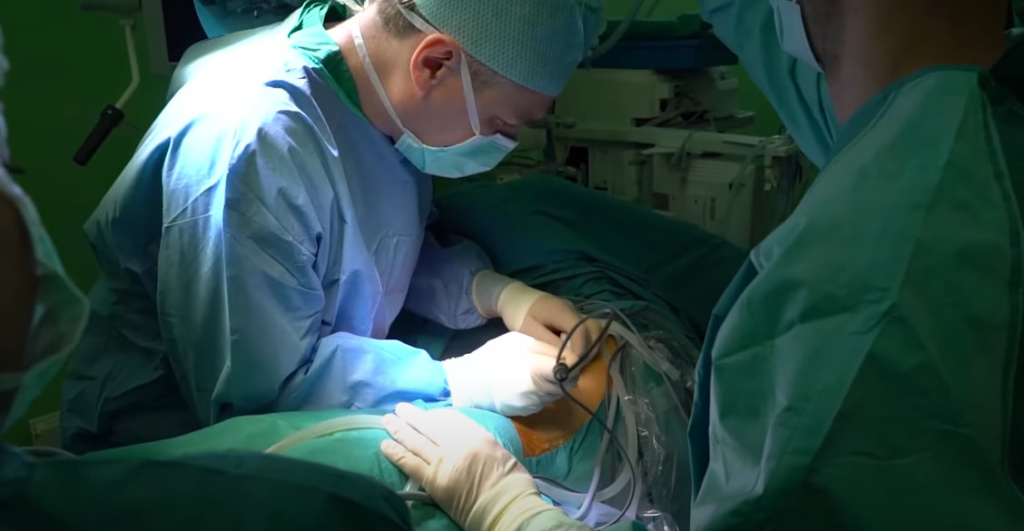
Classification of hernioplasty
Hernioplasty can be performed using two main techniques: tension and non-tension.
The stretching technique is based on using the patient's own tissues to eliminate a small defect in the abdominal wall. During the operation, the surgeon brings (pulls) together surrounding muscles and fascia to close the hernial gate. This is a time-tested method, but it has drawbacks. The main one is a high probability of recurrence (up to 40%), since the tension of the fascia can lead to their weakening and the re–formation of a hernial opening.
Non-tensioning hernioplasty technique involves the use of special meshes that are fixed in the area of the defect. This method is considered more modern and effective. Mesh endoprostheses do not create additional tension on the muscles, which reduces the risk of recurrence tenfold. In addition, they provide reliable strengthening of the anterior abdominal wall and promote its natural recovery.
Advantages of mesh endoprostheses
The technique using mesh implants to close the hernial gate has advantages. Here are the main advantages of endoprostheses:
-
ensure reliable closure of the defect;
-
prevent recurrence of postoperative hernia;
-
They do not cause much stress on the surrounding tissues, which ensures a more comfortable postoperative period.;
-
They contribute to the natural restoration of the abdominal wall, forming a "framework" for the growth of new tissues.
Modern mesh endoprostheses are made of biocompatible materials that do not cause rejection. This allows them to be used even in patients with hypersensitivity or allergic reactions.
The choice of hernioplasty method depends on various factors, including the size and type of postoperative hernia, the patient's general health, his age, and concomitant diseases. In most cases, a non-strenuous technique with the use of nets is preferred, as it provides effective results and minimal risk of recurrence.
Indications and contraindications
In itself, the appearance of a postoperative hernia is already an indication for surgery. This pathology does not go away on its own, therefore surgical treatment is necessary. Hernioplasty is indicated in the following conditions:
-
the presence of severe pain in the patient;
-
an increase in the size of the postoperative hernia;
-
dysfunction of organs located in the hernial sac;
-
reduced quality of life;
-
restriction of physical activity;
-
hernia injury.
In case of hernia injury, surgery is performed as an emergency, as this condition can lead to tissue necrosis and the development of peritonitis.
There are also a number of conditions in which surgery is not recommended. These include severe cardiovascular diseases, including acute coronary syndrome, unstable angina, grade 3-4 heart failure, as well as cardiac rhythm and conduction disorders. Surgery is contraindicated in the presence of decompensated diabetes mellitus, cirrhosis of the liver, acute purulent and infectious diseases, as well as chronic lung diseases in the acute stage.
In some cases, a planned operation may be postponed. For example, if not enough time has passed since the previous laparoscopy or extensive suppuration of the surgical wound. In such cases, conservative treatment is recommended, including wearing a bandage, following a diet, and, if necessary, using medication.
Preparing for the operation
Preparation for plastic surgery depends on its nature - planned or emergency. In the case of a planned intervention, the patient must undergo blood and urine tests, an ECG and a lung X-ray in a few days. Ultrasound of the anterior abdominal wall or CT scan may be required. You also need to visit a therapist to identify possible contraindications and an anesthesiologist to choose the method of anesthesia. The surgeon may additionally prescribe preoperative training in the form of wearing a bandage or correcting body weight. So, for planned interventions, a body mass index below 35 is considered ideal .
Before surgery, it is recommended to follow a gentle diet, exclude alcohol consumption and smoking. On the eve of the intervention, intestinal cleansing is performed. On the day of plastic surgery, the patient must come on an empty stomach.
Technique
Postoperative hernia surgery using meshes is most often performed laparoscopically or endoscopically. The minimally invasive technique is minimally traumatic for the anterior abdominal wall, which allows the patient to quickly return to a normal lifestyle, including physical activity.
Hernioplasty is performed under anesthesia. The entire operation is monitored using a monitor to which images from the endoscope are transmitted.
-
The surgeon makes several small punctures in the abdominal area to insert an endoscope and surgical instruments.
- The organs located in the hernial sac return to the abdominal cavity.
- A special surgical mesh is applied to the area with weakened tissues (hernial gate). This implant reduces pressure and tension on the patient's tissues, providing support for them.
- The grid is fixed using a turntable at several points.
- The abdominal wall is reconstructed, the aponeurosis, the white line and the hernial gate are stitched.
- If necessary, drainage is installed
An important advantage of laparoscopic hernioplasty is its aesthetic result. Puncture sites heal within a month and become almost invisible. Usually, the patient stays in the hospital for only one day, and after two weeks he can return to normal life.
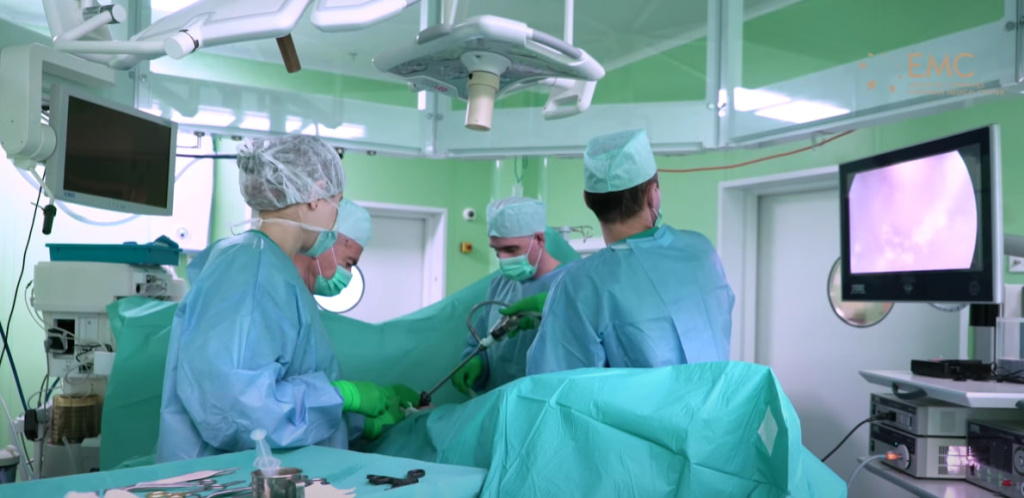
Rehabilitation
On the same day after the operation, the patient is allowed to get up and move around with the help of medical staff, in the absence of contraindications, he can be discharged from the hospital after 1-2 days. There are no special restrictions in everyday life. It is recommended only to exclude physical activity, take proper care of the postoperative wound and take medications prescribed by a doctor (usually antibiotics to prevent infection and analgesics to relieve pain) and wear a bandage.
The average rehabilitation period is from 1 to 2 months, depending on the individual characteristics of the patient: age, general health and the presence of chronic diseases.
Advantages of treatment at the EMC clinic
At the EMC clinic, we perform all types of surgical procedures, both planned and emergency. Advantages of treatment in our center:
-
a full range of surgical techniques for the treatment of various diseases of the abdominal and thoracic cavities, as well as soft tissues;
-
advanced techniques with proven effectiveness, including operations using the Da Vinci Si HD robot;
-
highly qualified specialists, recognized in Russia and abroad;
-
everything for the safety and comfort of patients: JCI international accreditation, the hospital is equipped with modern equipment that meets international standards;
-
Round-the-clock visits are available, which allows relatives to be near the patient at any time.;
-
the possibility of prompt consultation with any of our specialists due to the versatility of the clinic;
-
Surgeons work closely with internists, anesthesiologists, and other doctors to create the safest possible conditions for each operation.
The use of advanced technologies at all stages of treatment allows us to shorten the patient's stay in the hospital before and after surgery. We strive for an integrated approach to treatment, combining the effectiveness of the techniques with the ability to quickly restore the functions of organs and the body as a whole.
If you are concerned about an abdominal hernia, do not delay treatment and make an appointment with a doctor. Hernias do not heal on their own and are dangerous due to injury, which requires emergency treatment. Elective surgeries are more comfortable for patients and allow them to use minimally invasive techniques for rapid recovery.
Doctors
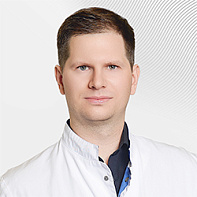


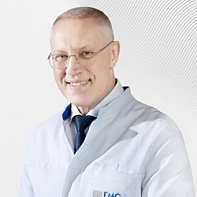
.jpg)
- He knows the techniques of performing aesthetic operations on the face, chest and body
- Performs high precision male and female liposculpture of the body (Hi-Def) with muscle drawing using the latest PAL LipoSculptor vibrating liposuction machine
- He completed his residency in Plastic Surgery at the I.M. Sechenov First Moscow State Medical University
